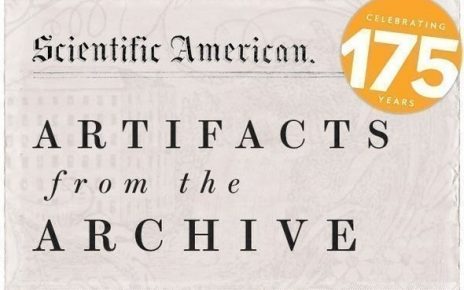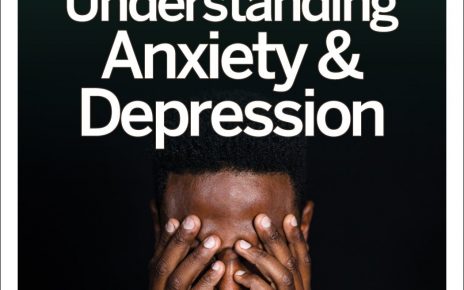The items below are highlights from the free newsletter, “Smart, useful, science stuff about COVID-19.” To receive newsletter issues daily in your inbox, sign-up here.
Are you in need of a “dose of optimism” about the pandemic, at least in the U.S.? Check out this 10/12/20 story at The New York Times by by Donald McNeil Jr., who has covered infectious diseases and epidemics for many years. McNeil notes the 215,000 people in the U.S. dead so far from the novel coronavirus, as well as the estimates that the figure could go as high as 400,000 before this era draws to a close. But here is some of the good news that he tallies: 1) mask-wearing by the public is “widely accepted”; 2) the development of vaccines to protect against SARS-CoV-2 and of treatments for COVID-19 are proceeding at record speed; 3) “experts are saying, with genuine confidence, that the pandemic in the United States will be over far sooner than they expected, possibly by the middle of next year”; and 4) fewer infected people die today than did earlier this year, even at nursing homes. About 10 percent of people in the U.S. have been infected with the virus so far, according to the U.S. Centers for Disease Control, the story states. “Pandemics don’t end abruptly; they decelerate gradually,” McNeil writes.
A 10/14/20 story by Carl Zimmer for The New York Times puts into context three late-stage (Phase 3 safety and effectiveness) COVID-19 experiments that have been paused in recent weeks due to illness among some study participants. Pauses in vaccine studies — in this case Johnson & Johnson’s vaccine candidate and AstraZeneca’s vaccine candidate — are “not unusual,” the story states, partly because the safety threshold is extremely high for a product that, if approved, could be given to millions or billions of people. But pauses are rare in treatment studies — in this case Eli Lilly’s monoclonal antibody cocktail drug. Once a drug or treatment experiment (trial) is paused, a safety board determines whether the ill participant was given the new product or a placebo. If it was the placebo, the study can resume. If not, the board looks deeper into the case to determine whether or not the illness is related to the drug or treatment. If a clear connection is discovered, “the trial may have to stop,” Zimmer writes. Dr. Eric Topol at Scripps Research is quoted in the piece as saying he is “still fairly optimistic” about monoclonal antibody treatments for COVID-19. The safety-related pauses of all three experiments are “an example of how things are supposed to work,” says Dr. Anna Durbin of Johns Hopkins Bloomberg School of Public Health in the story.
The top of a story at The Washington Post features an instructive interactive that sketches “Scienceville,” a fictional place where “politicians and public health officials use every tool at their disposal to contain the coronavirus.” It basically shows how genetic analysis and tracing of viral strains found in a frequently and widely tested population could help officials control outbreaks of SARS-CoV-2. Then the 10/13/20 text story below, by Brady Dennis, Chris Mooney, Sarah Kaplan, and Harry Stevens, focuses on the details of such a “genomic epidemiology” approach and describes some real-life efforts under way, primarily in the UK, to implement the approach. The U.S. has not been able to effectively use the approach, in part because genetic sequencing of viral strains “has largely been left up to states and individual researchers, rather than being part of a coordinated and well-funded national program,” the story states.
The rise in SARS-CoV-2 infections in the U.S. is now driven by “small gatherings in people’s homes,” according to officials with the U.S. Centers for Disease Control, reports Carolyn Crist for WebMD (10/14/20). People should continue to wear face masks and to practice social distancing “since most people have still not been exposed to the coronavirus worldwide,” the researchers suggest, Crist writes.
A newly developed test can detect SARS-CoV-2 in 5 minutes, reports Robert F. Service at Science (10/8/20). The test relies on CRISPR gene-editing technology, for which Jennifer Doudna of the University of California, Berkeley, and Emmanuelle Charpentier of the Max Planck Unit for the Science of Pathogens won the Nobel Prize in Chemistry earlier this month. Doudna heads up the work that led to this new 5-minute CRISPR test for the coronavirus. By comparison, it can take a day or more to get back standard SARS-CoV-2 test results, the story states.
Donald G. McNeil Jr. at The New York Times has written a guide to distinguishing common cold, flu, and COVID-19 symptoms (10/3/20). A major difference between having a cold and having the flu is that “Flu makes you feel as if you were hit by a truck,” McNeil quotes experts as saying. The symptom that best distinguishes COVID-19 from flu is loss of your sense of smell — strong smells don’t register, he writes. But many flu and COVID-19 symptoms overlap, the story states. The most common symptoms for COVID-19 are a high fever, chills, dry cough and fatigue. For flu, it’s a fever, headaches, body aches, sore throat, runny nose, stuffed sinuses, coughing and sneezing, the story states.
Dr. Anthony Fauci’s three daughters do not plan to visit him for Thanksgiving to avoid potentially transmitting the new coronavirus to their parents, reports Ralph Ellis at WebMD. The story includes holiday traveling and visiting tips from a pulmonary critical care doctor at the University of Washington Medical Center who “believes traveling for the holidays is risky.” The tips include ensuring you have no COVID-19-like symptoms two weeks before traveling, getting tested before traveling, quarantining in a hotel for at least 48 hours before visiting with loved ones, traveling by car, and cutting down on “close contact and talking without a mask” (10/9/20).
Adele Chapin has written a guide for reducing kids’ risk of catching and spreading SARS-CoV-2 at the playground. The 10/8/20 piece in The Washington Post makes the usual recommendations for mask-wearing, hand-washing, hand-sanitizer, disinfecting wipes, and distancing. It quotes a Children’s National Hospital pediatrician advises against gloves, because “people wearing them often touch their faces, which defeats the purpose.” The piece also recommends visiting playgrounds at less busy times and choosing playgrounds with more than one play structure, which makes it easier for kids to distance from one another.
A story by Carl Zimmer for The New York Times beautifully describes and illustrates some of the amazing imaging work that scientists have done to study the structure of SARS-CoV-2 and how it infects our cells and multiplies (10/9/20). For starters, check out a mesmerizing video about a quarter of the way down-page that simulates spike proteins (complex molecules) doing a “molecular dance” on the virus membrane. The video (just one of several in this stunning piece) is part of research by a computational biophysicist at the Max Planck Institute of Biophysics and colleagues. The spikes appear to shimmy, which “increases the odds of encountering the protein on the surface of our cells it uses to attach,” the researchers suspect, Zimmer writes.
You might enjoy, “A letter of recommendation in the age of Zoom,” by Matt Cheung, for McSweeney’s (10/14/20).




